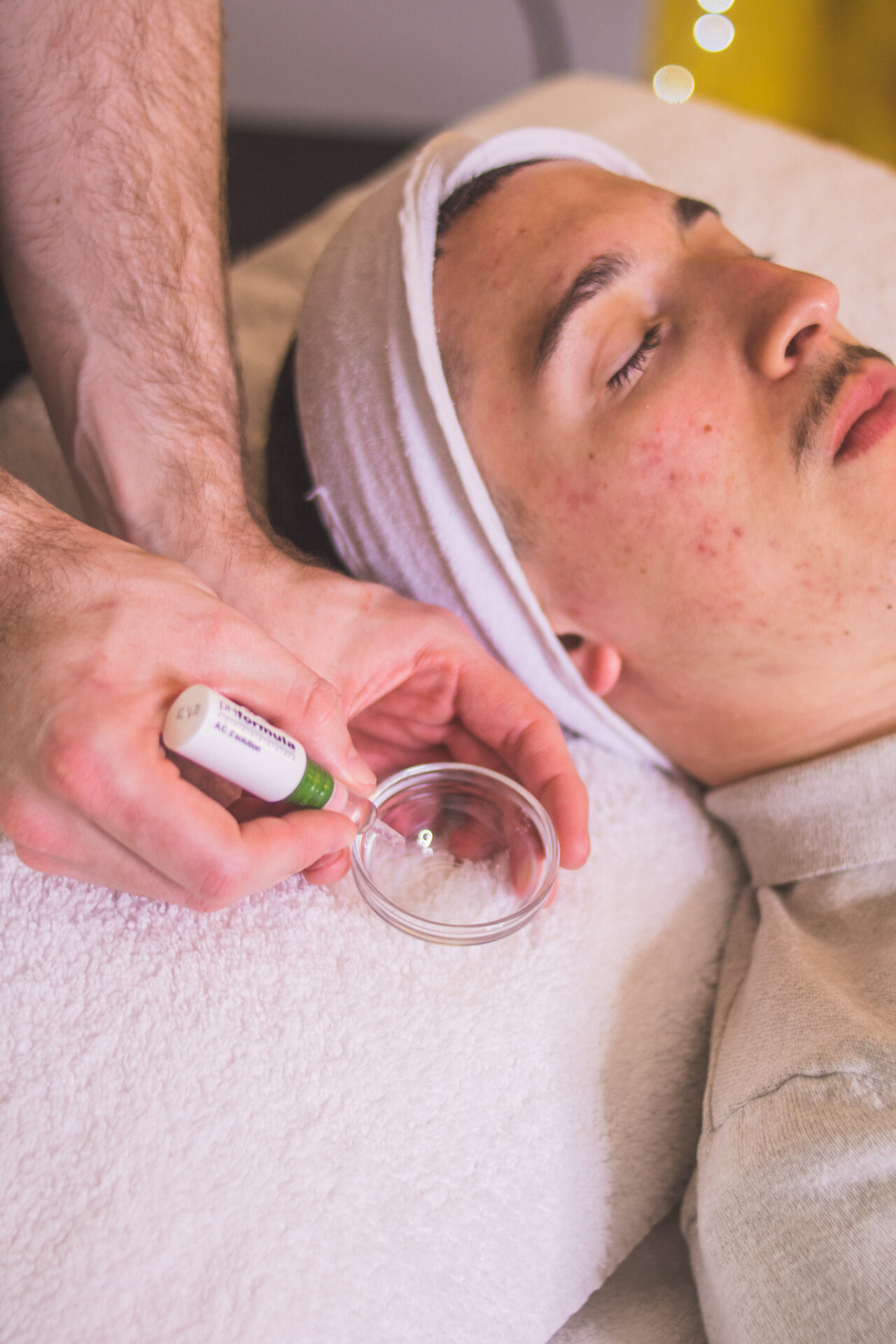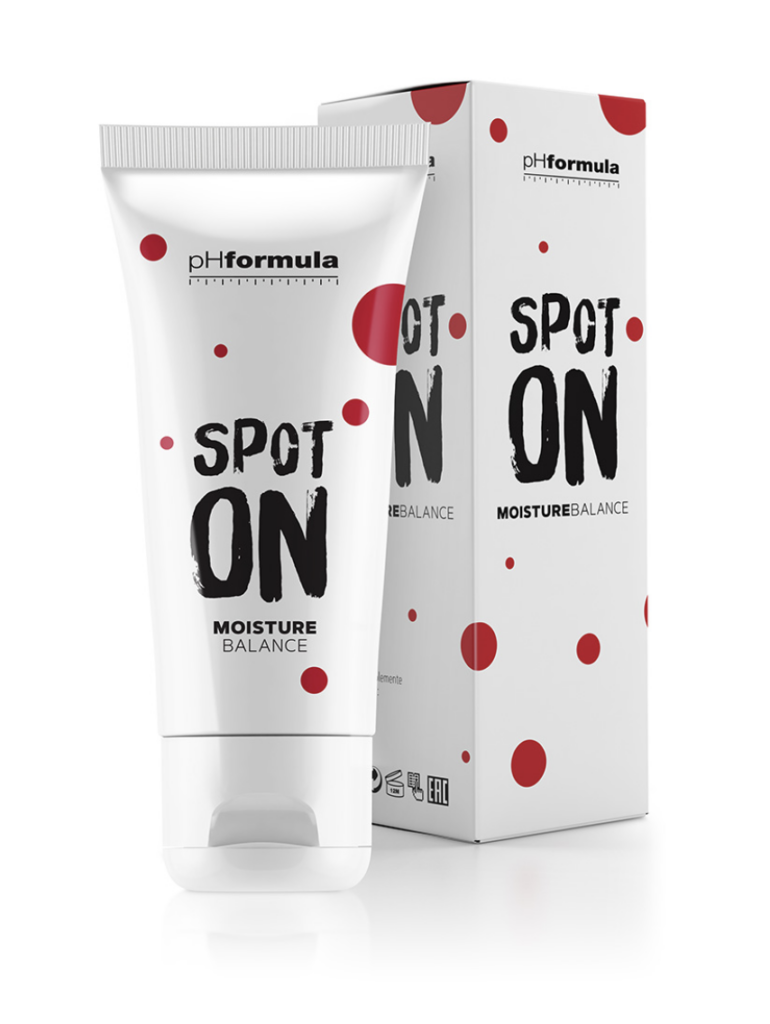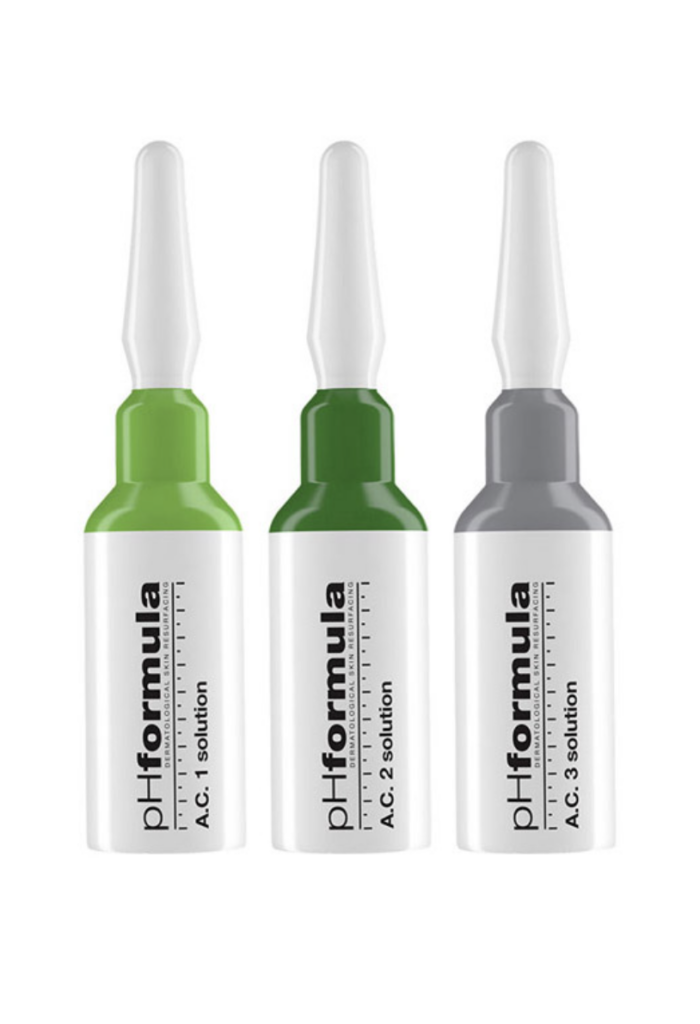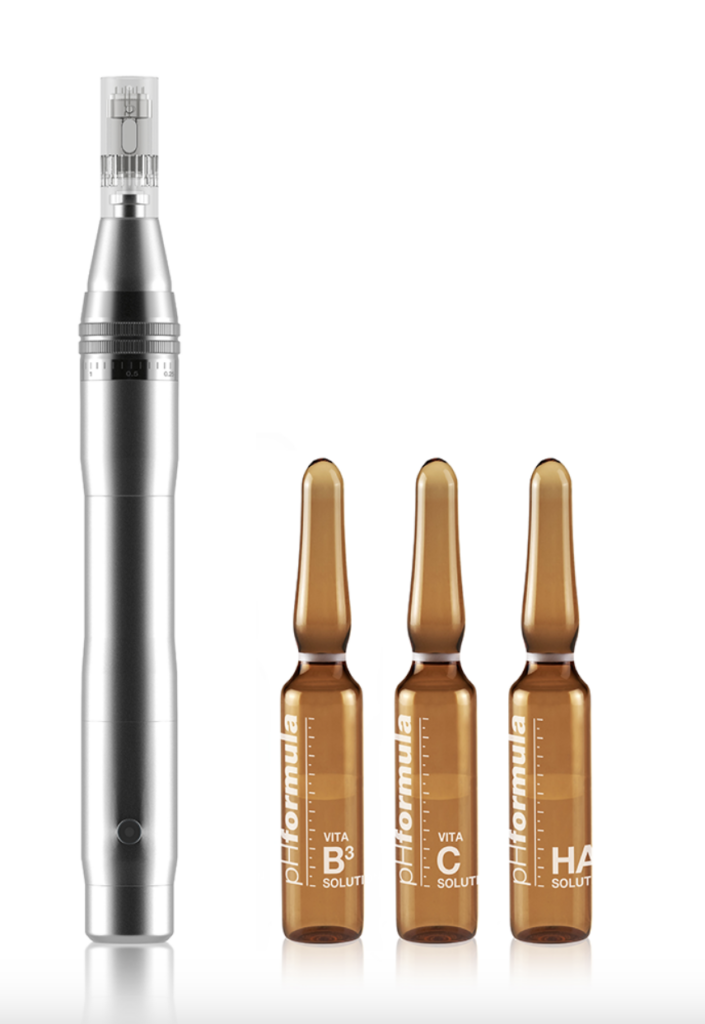What is ACNE?
Acne is a common term for the presence of blackheads, whiteheads, and other types of pimples on the skin. There are varying levels and severities to how we grade acne and in turn how we approach treating it. The most common areas for acne breakouts are the skin on the face, chest, shoulders and back.
Different manifestations of ACNE:
– Whiteheads:
Also known as “closed comedones,” whiteheads are one of the most typical forms of acne. They appear on the skin as small or medium bumps, usually whitish or skin-tone in colour.
Whiteheads occur when a pore becomes clogged with a mix of dead skin cells and sebum. This clogged pore gets covered by a layer of skin and develops pus within. Unlike pustules and most other acne breakouts, whiteheads are considered non-inflammatory blemishes. So you’re unlikely to experience swelling and redness with these pimples.
– Blackheads:
Also called “open comedones,” blackheads get their name because they appear as dark spots in your skin. Blackheads too are caused by clogged pores, however, unlike whiteheads, those clogs of oil and skin cells are open to the air.
– Papules:
Acne papules are the swollen red bumps that so many of us imagine as “typical” breakouts.
Like other acne blemishes, papules develop when excess oil and dead skin cells clog your pores. Pressure builds up in the blocked pore and can cause the walls of your pore to rupture, spreading bacteria into the surrounding skin. Your immune system responds to the rupture with inflammation, giving papules their red and swollen appearance.
– Pustules:
Pustules are essentially papules that fill with pus when your immune system kicks in. The red bumps develop a swollen white or yellow cap, giving pustules that classic pimple look.
Pustules can form anywhere on your body, but they’re most commonly found on areas such as your face, chest, and back.
Different manifestations of acne:
– Nodules:
Nodules are a more severe form of acne that can be hard to address. They appear similar to papules but start deeper within the layers of your skin, where they are challenging to treat and nearly impossible to extract.
Nodules look like red or skin-coloured bumps, and never have a “head” like whiteheads or pustules. They feel firm and are painful to the touch.
Acne nodules can appear on their own or in sore patches across your skin. Sometimes they even coexist with equally painful cysts in a breakout known as nodulocystic acne.
– Cysts:
Cystic acne is another form of severe acne that forms far below the surface of your skin. Cysts resemble deep, red lumps and are filled with pus or other liquids and feel soft to the touch. Either way, they can be very tender and painful!
Cystic acne is common along the face and jawline, or even as “bacne.” Caused by the usual trio of excess oil, dead skin, and bacteria, cysts are a particularly stubborn form of breakout, lingering for weeks or even months.
Of all acne blemishes, cysts are the most likely to leave a scar, and trying to pop them will only make scarring worse.
Cystic acne is not caused by poor hygiene. But following a nourishing skincare routine designed for acne-prone skin can help to keep cystic acne under control.
– Milia:
Milia aren’t technically classified as acne. But they’re often confused for pimples and should be on your radar if you’re trying to identify mystery blemishes.
Technically tiny cysts, milia are small, light bumps that often crop up around your nose, cheeks, and eyes. They are caused by trapped skin flakes or keratin deposits. Keratin is the protein responsible for keeping your hair, skin, and nails strong. But when it gets caught beneath your skin, it causes hard bumps to form.
Find Out More:
Take a look at our education programme and start your education.
Treatments for ACNE:
– AC Resurfacing
The unique combination of actives in the pHformula A.C. solutions were specifically formulated to correct the main acneic manifestations. Such as comedones, papules and pustules. It was designed to act on the 4 factors that trigger acne.
1. Seborrhoea
2. Hyperkeratinisation
3. Microbial colonisation (P acnes)
4. Inflammation
Different protocols can be combined in a prescription program. The strength and depth of the products are controlled by the physician, based on application technique and the number of layers applied during the skin resurfacing procedure.
– CR Resurfacing
An active and effective complex for a complete restoration, chronic redness and rosacea-prone skin. Specifically formulated with anti-microbial activity to help reduce redness and prevent relapses.
Different protocols can be combined in a prescription program and the strength and depth of the products are controlled by the physician, based on application technique and the number of layers applied during the skin resurfacing procedure.
– Medical Micro-Needling
By using small needles to break the skin’s surface gently, micro-needling encourages your skin to regenerate, and the result is new, more youthful-looking skin. Alongside, this we use a transdermal solution bespoke to your needs containing skin essential nutrients, vitamins and actives to treat the lower layers of your skin effectively. It can treat a range of skin problems from wrinkles and fine lines to enlarged pores and acne or chickenpox scars. It can also help repair sun damage to the face, pigmentation and even help with cellulite and stretch marks.
– LED Light Therapy
Blue light is often used to treat acne. Studies show that blue light can kill the bacteria responsible for acne. It can also ease how much your oil glands make. This stops the hair follicle from becoming clogged and causing acne.
Red light is also typically used in combination with blue light to help ease inflammation and redness.
Products for ACNE:
– AC kit (pHformula)
The A.C. Homecare kit offers a complete skin resurfacing regimen for acne skin. This is the perfect introduction to the pHformula products.
– Vita A (pHformula)
The V.I.T.A. A 24 hour cream contains pure retinol and should be used as an advanced treatment product for ageing skin. Retinol help stimulate cell regeneration to diminish the appearance of fine lines, wrinkles, and age spots from both photo- and intrinsic ageing. Retinol is also effective in correcting blemishes and blotchiness often associated with problematic skin.
– Spot On Blemish Active (pHformula)
The fast-acting SPOT ON blemish active helps rapidly clear and soothe the discomfort of acne breakouts. The anti-microbial formula immediately eliminates acne-causing bacteria, while salicylic acid penetrates pores to clear acne blemishes.
– Spot On Moisture Balance (pHformula)
This fast absorbing moisturiser for young skin contains a unique combination of ingredients. It has been specially formulated to provide lightweight hydration whilst giving a mattified finish. This moisturiser leaves the skin feeling smooth and healthier looking.




